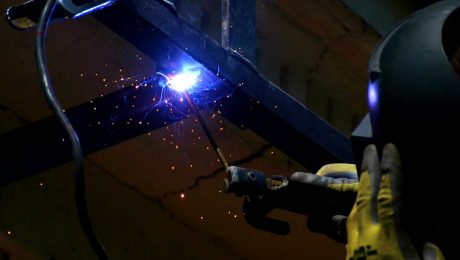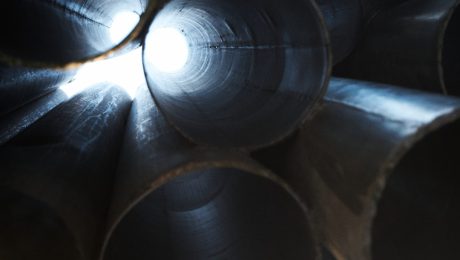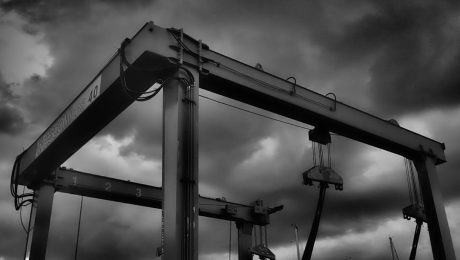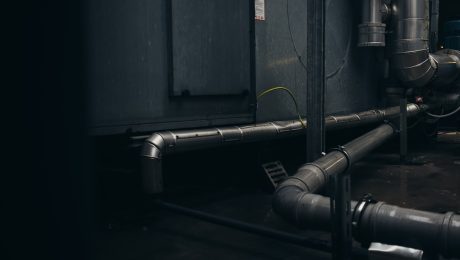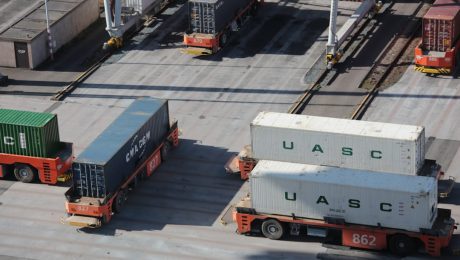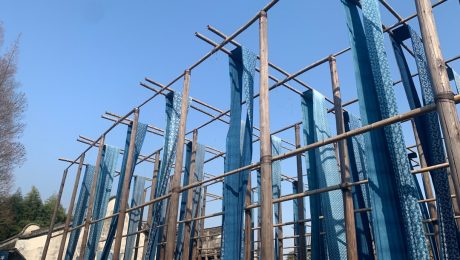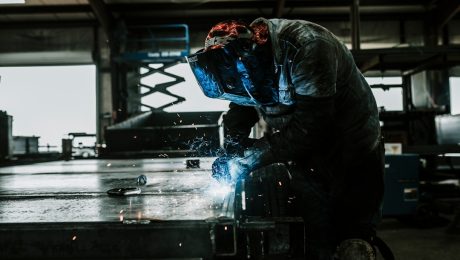body { font-family: sans-serif; line-height: 1.6; }
h1, h2, h3 { color: #333; }
h1 { font-size: 2.5em; }
h2 { font-size: 2em; }
h3 { font-size: 1.5em; }
The steel industry is a global powerhouse, demanding precision, expertise, and adherence to the highest safety and quality standards. To thrive in this competitive landscape, individuals and businesses alike often seek industry-recognized certifications. This comprehensive guide will navigate you through the world of steel industry certifications, helping you understand their importance, types, and how to secure them.
Understanding the Value of Steel Industry Certifications
Steel industry certifications aren’t just pieces of paper; they represent a commitment to excellence and a demonstrable level of competence. They offer several key benefits:
- Enhanced Credibility and Professional Recognition: Certifications validate your skills and knowledge, setting you apart from uncertified individuals and boosting your professional reputation.
- Improved Employability and Career Advancement: Many employers prioritize candidates with relevant certifications, opening doors to better job opportunities and higher salaries.
- Increased Earning Potential: Certified professionals often command higher wages due to their specialized expertise.
- Safety and Quality Assurance: Certifications demonstrate a commitment to safety protocols and quality control, crucial in a high-risk industry like steel manufacturing.
- Business Advantage: For companies, certifications can attract clients seeking assurance of quality and compliance with industry standards.
Types of Steel Industry Certifications: A Diverse Landscape
The steel industry encompasses a vast range of specializations, leading to a variety of certifications. Some common categories include:
- Welding Certifications (AWS, ASME): These are crucial for welders involved in steel fabrication, focusing on specific welding processes and materials. Organizations like the American Welding Society (AWS) and the American Society of Mechanical Engineers (ASME) offer widely recognized certifications.
- Metallurgical Engineering Certifications: These certifications focus on the science and technology of metals, including steel production, processing, and properties. Professional organizations like ASM International often offer relevant certifications.
- Quality Management System Certifications (ISO 9001): These are crucial for companies demonstrating their commitment to quality management principles throughout their operations, including steel production and supply chains.
- Safety and Environmental Certifications (OSHA, ISO 14001): Certifications related to occupational safety and environmental management are vital for demonstrating compliance with regulations and minimizing risks.
- Specific Material Certifications (e.g., Stainless Steel): Some certifications focus on specific steel types or alloys, requiring specialized knowledge and expertise.
Navigating the Certification Application Process: A Step-by-Step Guide
The application process for steel industry certifications varies depending on the specific certification and issuing body. However, general steps often include:
- Research and Selection: Identify the relevant certification based on your career goals or business needs.
- Eligibility Requirements: Check the eligibility criteria, including education, experience, and any prerequisite training.
- Application Submission: Complete the application form accurately and thoroughly, providing all necessary documentation.
- Examination or Assessment: Most certifications involve an examination or practical assessment to evaluate your knowledge and skills.
- Certification Granting: Upon successful completion of the assessment, you will receive your certification.
- Maintenance and Renewal: Many certifications require periodic renewal, often involving continuing education or professional development activities.
Choosing the Right Certification: Aligning with Your Goals
Selecting the appropriate certification is crucial. Consider the following factors:
- Your Career Aspirations: What are your short-term and long-term career goals? The right certification should align with your desired path.
- Your Current Skills and Experience: Choose a certification that builds upon your existing knowledge and skills.
- Industry Recognition and Employer Preferences: Research which certifications are most highly valued within your target industry and by potential employers.
- Cost and Time Commitment: Consider the financial investment and the time required to complete the certification program.
- Certification Body Reputation: Choose a reputable and recognized certification body to ensure the validity and value of your credential.
Maintaining Your Certification: Continuous Professional Development
Once you’ve earned your steel industry certification, it’s crucial to maintain it through continuous professional development. This demonstrates ongoing commitment to excellence and keeps your skills up-to-date with industry advancements. Methods for maintaining your certification might include:
- Participating in industry conferences and workshops.
- Completing continuing education courses.
- Staying abreast of industry best practices and new technologies.
- Networking with other professionals in the field.
- Regularly reviewing relevant industry standards and codes.
By understanding the value, types, application process, and maintenance requirements of steel industry certifications, you can significantly enhance your career prospects or your company’s competitive edge. This comprehensive guide serves as a starting point for your journey towards achieving excellence in the dynamic world of steel.
Tags: Steel Industry Certification, Welding Certification, Metallurgical Certification, ISO 9001, Quality Management, Safety Certification
In today’s competitive global market, maintaining high-quality products and efficient production processes is paramount. Achieving and maintaining ISO compliance is no longer a luxury but a necessity for businesses aiming for sustained growth and market leadership. This comprehensive guide will explore the key aspects of implementing and maintaining ISO-compliant production processes, focusing on the benefits and practical steps involved.
Understanding ISO Standards and Their Relevance to Production
The International Organization for Standardization (ISO) develops and publishes international standards. While many ISO standards exist, ISO 9001:2015 (Quality Management Systems) is the most widely recognized and relevant for production processes. This standard provides a framework for establishing, implementing, maintaining, and continually improving a quality management system (QMS). Adherence to ISO 9001 demonstrates a commitment to quality, customer satisfaction, and continuous improvement, significantly enhancing a company’s credibility and competitiveness. Compliance involves meticulously documenting processes, implementing controls, and regularly auditing performance against established benchmarks. This rigorous approach minimizes errors, reduces waste, and improves overall efficiency.
Implementing a Robust Quality Management System (QMS)
The foundation of ISO-compliant production lies in a robust QMS. This system encompasses all aspects of production, from initial design and procurement to final product delivery and post-sale service. Key elements include:
- Documented Procedures: Every process, from material handling to quality checks, must be clearly documented with step-by-step instructions and responsibility assignments. This ensures consistency and repeatability.
- Internal Audits: Regular internal audits are crucial to identify areas of non-compliance and potential improvement. These audits should be conducted by trained personnel and documented thoroughly.
- Corrective and Preventive Actions (CAPA): A well-defined CAPA process is essential for addressing non-conformances and preventing their recurrence. This involves identifying root causes, implementing corrective actions, and monitoring their effectiveness.
- Management Review: Regular management reviews provide a high-level assessment of the QMS’s effectiveness. These reviews should involve top management and address key performance indicators (KPIs) related to quality and efficiency.
- Continuous Improvement: The ISO 9001 standard emphasizes continuous improvement. Regularly reviewing processes, seeking feedback from employees and customers, and implementing improvements are integral to maintaining compliance and enhancing performance.
The Role of Risk Management in ISO-Compliant Production
ISO 9001 emphasizes proactive risk management. Identifying and mitigating potential risks throughout the production process is essential for preventing defects, delays, and other issues. This involves:
- Risk Assessment: Conducting thorough risk assessments to identify potential hazards and vulnerabilities in all stages of production.
- Risk Mitigation Strategies: Developing and implementing strategies to reduce or eliminate identified risks. This might involve process improvements, employee training, or investment in new equipment.
- Monitoring and Review: Regularly monitoring the effectiveness of risk mitigation strategies and adjusting them as needed. This ensures that the QMS remains robust and adaptive.
Ensuring Traceability and Control Throughout the Production Chain
Maintaining complete traceability is crucial for ISO compliance. This means being able to track every component, material, and process step throughout the entire production chain. Effective traceability allows for:
- Identifying the source of defects: If a problem arises, traceability allows for quick identification of the root cause, facilitating swift corrective action.
- Meeting regulatory requirements: Many industries have stringent traceability requirements, and ISO compliance helps ensure adherence.
- Improving efficiency: Precise tracking of materials and processes can help optimize inventory management and reduce waste.
- Enhancing product recall management: In the event of a product recall, traceability simplifies the process of identifying and isolating affected products.
This often involves implementing robust tracking systems, such as barcodes, RFID tags, or specialized software.
Maintaining ISO Certification and Continuous Improvement
Achieving ISO certification is a significant milestone, but it’s not a one-time event. Maintaining certification requires ongoing effort and commitment. This involves:
- Regular Internal Audits: Continuously monitoring the effectiveness of the QMS through regular internal audits.
- Management Review: Regularly reviewing the performance of the QMS and identifying areas for improvement.
- External Audits: Undergoing regular external audits by a certified certification body to verify compliance with the ISO standard.
- Corrective and Preventive Action (CAPA): Implementing a robust CAPA system to address any non-conformances identified during audits.
- Employee Training: Providing ongoing training to employees to ensure they understand and adhere to the QMS.
Continuous improvement should be a core principle, constantly striving for greater efficiency, reduced waste, and enhanced quality. Regularly reviewing processes, implementing new technologies, and seeking employee feedback are all integral to this process.
Implementing ISO-compliant production processes requires a significant commitment, but the benefits are substantial. Enhanced quality, increased efficiency, improved customer satisfaction, and enhanced market credibility are just some of the rewards. By embracing a culture of quality and continuous improvement, businesses can gain a significant competitive advantage in the global marketplace.
Tags: ISO compliance, production processes, quality management, ISO 9001, manufacturing
GloballSteel is a leading provider of high-quality steel products, catering to diverse industries worldwide. Our commitment to excellence, coupled with a wide-ranging product portfolio, ensures we meet the unique needs of our clients. This comprehensive overview will delve into the key aspects of our offerings, highlighting the diverse grades, applications, and manufacturing processes that define our success.
A Spectrum of Steel Grades: Meeting Diverse Industry Needs
GloballSteel offers a vast spectrum of steel grades, meticulously engineered to meet the specific requirements of various applications. Our portfolio includes:
- Carbon Steel: A foundational material known for its versatility and cost-effectiveness. We offer a range of carbon steel grades, from low-carbon steel ideal for automotive components to high-carbon steel suitable for tools and machinery requiring exceptional strength and hardness. Specific grades include but are not limited to 1018, 1020, 1045, and 1095, each with its own unique mechanical properties tailored to different applications.
- Alloy Steel: These steels are enhanced with alloying elements like chromium, nickel, molybdenum, and manganese to improve properties such as strength, toughness, corrosion resistance, and hardenability. We offer a wide range of alloy steels, including those used in high-strength applications like construction, aerospace, and energy production. Examples include 4140, 4340, and 8620, each chosen for their specific performance characteristics.
- Stainless Steel: Renowned for its exceptional corrosion resistance, stainless steel is a cornerstone of many industries. GloballSteel provides a selection of stainless steel grades, including austenitic, ferritic, and martensitic types, catering to applications ranging from food processing equipment to architectural structures. Grades like 304, 316, and 410 are commonly available, each with its own unique chemical composition and resulting properties.
- Tool Steel: Engineered for exceptional hardness, wear resistance, and toughness, our tool steels are crucial for manufacturing tools and dies. These high-performance steels allow for the creation of durable cutting tools, molds, and other precision components vital to many industries.
Tailored Applications: Serving a Broad Range of Industries
The versatility of our steel grades translates into a wide array of applications across diverse industries. GloballSteel’s products are integral components in:
- Automotive: From chassis components to engine parts, our high-strength, lightweight steels contribute to vehicle safety and fuel efficiency.
- Construction: Our structural steel grades ensure the strength and durability of buildings, bridges, and other infrastructure projects.
- Energy: Our corrosion-resistant steels play a critical role in pipelines, power plants, and other energy infrastructure.
- Aerospace: Our high-performance alloy steels contribute to the safety and reliability of aircraft and spacecraft components.
- Manufacturing: Our tool steels are essential for creating precision tools and dies used in a wide range of manufacturing processes.
- Medical: Our stainless steels are used in the creation of medical instruments and equipment requiring high hygiene standards and corrosion resistance.
State-of-the-Art Manufacturing Processes: Ensuring Uncompromising Quality
GloballSteel employs advanced manufacturing processes to ensure consistent quality and precision in our steel products. Our facilities utilize cutting-edge technologies, including:
- Electric Arc Furnace (EAF) Melting: This highly efficient process allows for precise control over the chemical composition of the steel.
- Continuous Casting: This process produces high-quality steel slabs and billets with consistent dimensions and properties.
- Hot Rolling and Cold Rolling: These processes shape the steel into the desired dimensions and enhance its mechanical properties.
- Heat Treatment: Precise heat treatments optimize the mechanical properties of the steel, such as hardness, strength, and ductility.
- Quality Control: Rigorous quality control measures are implemented throughout the manufacturing process to ensure that our products meet the highest standards.
Commitment to Quality and Customer Satisfaction: Our Guiding Principles
At GloballSteel, our commitment to quality and customer satisfaction is paramount. We adhere to stringent quality control standards throughout the entire production process, from raw material selection to final product delivery. Our team of experienced engineers and metallurgists work closely with clients to understand their specific needs and provide tailored solutions. We are dedicated to providing exceptional customer service and building long-term relationships based on trust and mutual success.
Sustainability and Environmental Responsibility: A Global Commitment
GloballSteel recognizes the importance of environmental stewardship and is committed to sustainable practices throughout our operations. We continuously strive to reduce our environmental footprint through initiatives such as energy efficiency improvements, waste reduction programs, and responsible resource management. We believe that sustainable practices are not only environmentally responsible but also contribute to long-term economic viability and enhance our global reputation.
GloballSteel’s diverse product portfolio, coupled with our commitment to quality, innovation, and sustainability, positions us as a reliable and trusted partner for businesses worldwide. We invite you to explore our offerings further and discover how our steel products can contribute to your success.
Contact us today to learn more about how GloballSteel can meet your steel requirements.
Navigating the complex world of steel procurement can be daunting. With a vast array of grades, specifications, and suppliers, making informed decisions that balance quality, cost, and delivery can feel overwhelming. This is where expert technical consulting for steel buyers becomes invaluable. This guide explores how technical consultants can help you optimize your steel purchasing strategy and unlock significant savings.
Understanding Your Steel Needs: A Foundation for Success
Before diving into the specifics of steel selection and procurement, a thorough understanding of your needs is paramount. A technical consultant will work with you to define your project requirements, including the intended application of the steel, the necessary mechanical properties (strength, ductility, toughness), and any specific environmental considerations (corrosion resistance, temperature resistance). This detailed analysis forms the bedrock for informed decision-making throughout the procurement process. They’ll help you translate your engineering specifications into precise steel grade requirements, avoiding costly over- or under-specification.
Optimizing Steel Grade Selection: Balancing Performance and Cost
Choosing the right steel grade is crucial for ensuring project success and minimizing costs. Consultants possess extensive knowledge of various steel grades and their properties. They can analyze your needs and recommend the most cost-effective grade that meets all performance criteria. This often involves exploring alternative grades that offer comparable performance at a lower price point. They will also consider factors like availability, lead times, and potential processing challenges associated with different grades. Their expertise helps avoid unnecessary premium payments for grades that exceed your actual requirements.
Navigating the Steel Supply Chain: Ensuring Secure and Efficient Procurement
The steel supply chain is complex, with numerous intermediaries and potential bottlenecks. Technical consultants can provide invaluable support in navigating this landscape. They possess strong relationships with various steel mills and distributors, enabling them to source the best prices and secure reliable delivery schedules. They can help you manage risks associated with supply chain disruptions, such as geopolitical instability or unexpected demand surges. Their expertise extends to negotiating favorable contracts, ensuring that you receive the best possible terms and conditions.
Implementing Quality Control Measures: Guaranteeing Steel Integrity
Maintaining steel quality throughout the entire supply chain is essential to ensure project success and prevent costly rework or failures. Technical consultants can help you establish robust quality control procedures, including specifying appropriate testing methods and acceptance criteria. They can also assist with the interpretation of mill test reports and ensure that the received material conforms to the specified requirements. By proactively addressing potential quality issues, they minimize risks and prevent costly delays or failures down the line. This includes understanding and implementing relevant standards and certifications.
Cost Optimization Strategies: Maximizing Value from Your Steel Investments
Cost optimization is a crucial aspect of steel procurement. Technical consultants employ various strategies to help you minimize your steel expenses. This includes leveraging their market knowledge to identify price fluctuations and negotiate favorable terms with suppliers. They can also help you optimize material usage through efficient design and fabrication techniques, reducing waste and material costs. Furthermore, they can analyze your purchasing history to identify potential areas for improvement and implement strategies for long-term cost savings. This might include exploring alternative sourcing options, negotiating volume discounts, or implementing just-in-time inventory management.
In conclusion, engaging a technical consultant for steel buying offers significant advantages. From optimizing steel grade selection and navigating the supply chain to implementing quality control measures and optimizing costs, their expertise translates into substantial savings and improved project outcomes. Don’t navigate the complexities of steel procurement alone – partner with a trusted consultant to unlock the full potential of your steel investments.
Tags: steel consulting, steel buying, technical consulting, steel procurement, steel optimization
1. Choosing the Right Material: The Foundation of High-Pressure Pipe Safety
The selection of pipe material is paramount in ensuring high-pressure system safety. The material must possess the necessary strength, ductility, and resistance to corrosion and fatigue to withstand the operating pressures and temperatures. Common materials include carbon steel, stainless steel, and various alloys, each with its own strengths and weaknesses. Carbon steel is cost-effective but susceptible to corrosion; stainless steel offers superior corrosion resistance but can be more expensive. Specific alloys, such as chrome-molybdenum steel, are chosen for their exceptional strength at high temperatures and pressures. The choice depends heavily on the specific application, the transported fluid (corrosive or non-corrosive), and the operating conditions. Careful consideration of material properties, including yield strength, tensile strength, and creep resistance, is crucial. Engineering standards and codes, such as ASME B31.1 and ASME B31.3, provide guidance on acceptable materials for various pressure applications. Incorrect material selection can lead to catastrophic failures, highlighting the importance of meticulous planning and expert consultation.
2. Regular Inspection and Maintenance: Preventing Catastrophic Failures
Proactive inspection and maintenance are cornerstones of high-pressure pipe safety. Regular visual inspections should be carried out to detect signs of corrosion, erosion, leaks, or damage. These inspections should include checking for dents, cracks, pitting, and any signs of weakening. More advanced non-destructive testing (NDT) methods, such as ultrasonic testing (UT), radiographic testing (RT), and magnetic particle testing (MT), can be employed to detect internal flaws that are not visible to the naked eye. The frequency of inspections depends on factors such as the pipe material, operating pressure, fluid characteristics, and environmental conditions. A well-defined inspection schedule, often dictated by regulatory requirements, is essential. Maintenance activities include cleaning, repainting, and repairing or replacing damaged sections. Prompt attention to any detected defects is crucial to prevent minor issues from escalating into major safety hazards. A comprehensive maintenance program, incorporating both preventative and corrective measures, is vital for maintaining the integrity of the high-pressure piping system.
3. Pressure Testing and Validation: Ensuring System Integrity
Before a high-pressure pipe system is put into operation, rigorous pressure testing is mandatory. This involves subjecting the system to a pressure significantly higher than its operating pressure to verify its ability to withstand the intended load. The testing pressure and duration are determined according to relevant codes and standards. During the test, the system is carefully monitored for any leaks or signs of distress. Pressure testing provides a crucial validation of the system’s integrity and helps identify potential weaknesses before they lead to failures. Hydrostatic testing, using water as the pressure medium, is a common method. Pneumatic testing, using air or gas, is also used but requires extra precautions due to the higher risk of catastrophic failure if a leak occurs. Accurate pressure gauges and monitoring equipment are critical for ensuring the accuracy and reliability of the test. Proper documentation of the test results is essential for compliance and future reference. Successful completion of pressure testing provides assurance that the system is capable of safely operating at its designated pressure.
4. Emergency Procedures and Response: Mitigating Risks
Despite preventative measures, accidents can still occur. Having well-defined emergency procedures is crucial for minimizing the impact of high-pressure pipe failures. These procedures should include steps for immediate isolation of the affected section, evacuation of personnel from the danger zone, and notification of emergency services. Emergency shut-off valves should be readily accessible and clearly marked. Personnel should receive regular training on emergency procedures, including the use of personal protective equipment (PPE) and the proper response to different types of incidents. Emergency response plans should be regularly reviewed and updated to reflect changes in the system or operating conditions. Drills and simulations can help improve response times and coordination among personnel. A comprehensive emergency response plan is a vital component of a robust high-pressure pipe safety program. This plan should address all foreseeable scenarios, including leaks, ruptures, and fires.
5. Regulatory Compliance and Standards: Adhering to Best Practices
Operating high-pressure piping systems requires strict adherence to relevant regulations and industry standards. These regulations vary depending on the location and the specific application, but they generally cover aspects such as material selection, design, construction, inspection, testing, and operation. Familiarization with applicable codes and standards, such as ASME B31.1 (Power Piping), ASME B31.3 (Process Piping), and relevant OSHA regulations, is essential. Regular audits and inspections by regulatory bodies help ensure compliance. Maintaining accurate records of inspections, tests, and maintenance activities is crucial for demonstrating compliance. Non-compliance can result in significant penalties and legal liabilities. Staying updated on changes to regulations and standards is essential for maintaining a safe and compliant operation. Continuous improvement and a commitment to safety are vital for ensuring long-term success in managing high-pressure piping systems.
High-pressure pipe safety is not a single action but a multifaceted approach requiring continuous vigilance and commitment. By diligently following these guidelines, organizations can significantly reduce the risks associated with high-pressure systems and maintain a safe working environment.
Tags: High-pressure pipe safety, pipe inspection, pressure testing, pipe materials, safety regulations, industrial safety
body {
font-family: sans-serif;
line-height: 1.6;
margin: 20px;
}
h1, h2, h3 {
color: #333;
}
img {
max-width: 100%;
height: auto;
display: block;
margin: 20px auto;
}
In the world of industrial design, the choice of structural elements is paramount. Strength, efficiency, and cost-effectiveness are key considerations. While I-beams often steal the spotlight, IPN beams (Parallel Flange I-beams) offer a compelling alternative, boasting unique properties that make them ideal for a wide range of applications. This comprehensive guide delves into the world of IPN beams, exploring their advantages, applications, and design considerations.
Understanding IPN Beam Properties and Advantages
IPN beams, also known as parallel flange I-beams, are characterized by their parallel flanges—unlike the sloped flanges of traditional I-beams. This distinct feature offers several key advantages. The parallel flanges provide greater stability and simplify connections, especially when it comes to welding or bolting. The consistent flange width allows for easier design calculations and more predictable load distribution. Furthermore, IPN beams often demonstrate superior resistance to torsional stress compared to their I-beam counterparts, making them ideal for applications involving twisting forces. Their inherent strength-to-weight ratio also contributes to their popularity in applications where minimizing weight is crucial, such as in construction and transportation.
Common Applications of IPN Beams in Industrial Design
The versatility of IPN beams makes them suitable for a vast array of industrial applications. They are frequently employed in:
- Structural Frameworks: IPN beams form the backbone of many industrial structures, including warehouses, factories, and bridges. Their high load-bearing capacity and stability make them an excellent choice for supporting heavy machinery and equipment.
- Machine Frames and Bases: The rigidity and resistance to torsion offered by IPN beams are invaluable in the construction of robust machine frames and bases. These beams provide essential support and minimize vibrations, leading to improved machine performance and longevity.
- Transportation Infrastructure: In the transportation sector, IPN beams are used in the construction of railway platforms, bridges, and other critical infrastructure components where strength, durability, and resistance to dynamic loads are essential.
- Offshore Platforms: The corrosion resistance (when using appropriate materials) and high strength-to-weight ratio of IPN beams make them suitable for use in demanding offshore environments.
- Steel Structures: Generally speaking, IPN beams are a preferred choice in many steel structures due to their ease of fabrication and welding, leading to reduced construction time and costs.
Design Considerations for Incorporating IPN Beams
While IPN beams offer numerous benefits, careful consideration during the design phase is crucial to ensure optimal performance and safety. Factors to consider include:
- Load Calculations: Accurate load calculations are paramount to determine the appropriate size and grade of IPN beam for a specific application. This involves considering dead loads, live loads, and any dynamic forces.
- Support Conditions: The type of support (e.g., simply supported, fixed, cantilever) significantly impacts the beam’s behavior under load. Careful consideration of support conditions is essential for accurate design calculations.
- Connection Design: The design of connections between IPN beams and other structural elements is crucial for ensuring the overall stability and integrity of the structure. Welding, bolting, and other connection methods should be carefully selected and executed.
- Material Selection: The choice of material affects the beam’s strength, durability, and resistance to corrosion. Factors such as environmental conditions and the specific application should guide material selection.
- Deflection and Vibration: Excessive deflection or vibration can compromise the performance and longevity of a structure. Design calculations should account for these factors to ensure acceptable levels of deflection and vibration.
Comparing IPN Beams with Other Structural Sections
IPN beams are often compared with other structural sections, such as I-beams, H-beams, and channels. While all these sections offer structural support, IPN beams stand out due to their parallel flanges, which lead to several advantages. Compared to I-beams, IPN beams generally offer better resistance to torsion and simplify connections. Compared to H-beams, IPN beams may be lighter for the same load capacity in certain scenarios. The choice of the optimal section depends on the specific requirements of the application.
Cost-Effectiveness and Sustainability Aspects of IPN Beams
The cost-effectiveness of IPN beams stems from their efficient design and ease of fabrication. Their parallel flanges simplify manufacturing processes and reduce material waste, contributing to lower production costs. Furthermore, the optimized strength-to-weight ratio can lead to reduced transportation costs and lower overall project expenses. From a sustainability perspective, using IPN beams can contribute to more efficient resource utilization, leading to reduced environmental impact. The use of recycled steel in the production of IPN beams further enhances their sustainability credentials.
In conclusion, IPN beams represent a powerful and versatile tool in the industrial designer’s arsenal. Their unique properties, combined with careful consideration during the design phase, make them ideal for a wide range of applications demanding strength, efficiency, and cost-effectiveness. Understanding their advantages and limitations is crucial for maximizing their potential in diverse industrial projects.
Tags: IPN beams, parallel flange I-beams, industrial design, structural engineering, steel construction, structural elements, beam design
The construction industry is undergoing a significant transformation, driven by the need for sustainable, efficient, and cost-effective building solutions. Hybrid construction, a revolutionary approach combining traditional and modern building methods and materials, is at the forefront of this change. This comprehensive guide explores the multifaceted world of hybrid construction, delving into its various aspects and showcasing its potential to reshape the future of building.
Understanding the Essence of Hybrid Construction
Hybrid construction, in its simplest form, involves integrating different construction materials and techniques within a single structure. This isn’t merely about using a mix of materials; it’s about strategically combining their unique properties to optimize performance, reduce costs, and enhance sustainability. For instance, a project might use a steel frame for structural support, concrete for load-bearing walls, and timber for interior finishes. This strategic combination leverages the strengths of each material, mitigating their weaknesses. The result is a building that is stronger, more durable, and often more environmentally friendly than one built using a single material approach.
Popular Hybrid Construction Methods: A Closer Look
Several hybrid construction methods are gaining popularity. One prominent example is the combination of steel and concrete. Steel frames offer exceptional strength and flexibility, allowing for taller and more complex structures. Concrete, on the other hand, provides fire resistance, durability, and thermal mass. This combination is frequently seen in high-rise buildings and infrastructure projects. Another common approach is the integration of timber and concrete. Timber’s lightweight nature and ease of construction make it ideal for framing and cladding, while concrete provides the necessary structural integrity and fire protection. This method is particularly suited for residential and commercial buildings seeking a balance between sustainability and structural performance. Furthermore, the use of prefabricated modular components, often made from a combination of materials, is rapidly gaining traction. These modules are built off-site and transported to the construction site, significantly reducing construction time and costs.
Material Combinations: Exploring the Synergies
The success of hybrid construction hinges on selecting the right material combinations. The choice depends on various factors, including the building’s intended use, budget, site conditions, and environmental considerations. Common material pairings include:
- Steel and Concrete: Offers high strength, fire resistance, and durability.
- Timber and Concrete: Combines sustainability, lightweight construction, and structural integrity.
- Steel and Timber: Provides a balance of strength, flexibility, and sustainable material use.
- Concrete and Masonry: Offers robust structural performance and aesthetic versatility.
- Bamboo and Concrete: A rapidly growing sustainable approach, leveraging bamboo’s strength and rapid growth.
Careful consideration of material compatibility, thermal performance, and long-term maintenance is crucial when selecting these combinations.
Sustainability and Environmental Impact: A Green Approach
Hybrid construction offers significant advantages in terms of sustainability. By utilizing a mix of materials, it’s possible to reduce the overall environmental footprint of a building. For instance, incorporating timber reduces reliance on energy-intensive materials like steel and concrete. Furthermore, the use of prefabricated components minimizes waste on-site and improves construction efficiency. The selection of recycled or sustainably sourced materials further enhances the environmental benefits. Hybrid construction methods also allow for optimized energy performance, reducing operational costs and carbon emissions throughout the building’s lifecycle. Strategies such as improved insulation and the incorporation of renewable energy systems can be seamlessly integrated into hybrid designs.
Future Trends in Hybrid Construction
The future of hybrid construction is bright, with several exciting trends emerging. The increasing adoption of Building Information Modeling (BIM) is streamlining the design and construction process, allowing for better material coordination and optimization. The development of innovative composite materials, such as self-healing concrete and high-performance timber, is further enhancing the capabilities of hybrid structures. Furthermore, advancements in 3D printing and robotics are automating certain aspects of construction, improving efficiency and reducing labor costs. The integration of smart technologies, such as sensors and IoT devices, is also becoming more common, allowing for real-time monitoring and optimization of building performance. Ultimately, the future of hybrid construction lies in its ability to create more sustainable, resilient, and efficient buildings that meet the evolving needs of society.
Tags: Hybrid Construction, Sustainable Building, Construction Techniques, Green Building Materials, Building Innovation
The steel industry is a behemoth, demanding efficient and cost-effective logistics to keep pace with global construction, manufacturing, and infrastructure projects. Steel, a heavy and bulky material, presents unique logistical challenges. However, advancements in technology and strategic optimization techniques are revolutionizing steel delivery, leading to significant improvements in speed, cost, and overall efficiency. This post delves into the key aspects of optimizing steel delivery logistics.
1. Route Optimization: The Path to Punctual Delivery
Route optimization is paramount in steel delivery. Traditional methods often rely on static routes, ignoring real-time traffic, road closures, and other unforeseen circumstances. Modern logistics optimization utilizes sophisticated software incorporating GPS tracking, real-time traffic data, and advanced algorithms to dynamically adjust routes. This ensures the most efficient path, minimizing travel time and fuel consumption. Factors considered include:
- Distance and Time: The software calculates the shortest and fastest route, considering speed limits and traffic patterns.
- Vehicle Capacity and Load: Routes are optimized based on the weight and volume capacity of the delivery trucks, ensuring efficient loading and preventing overloading.
- Delivery Windows: The software schedules deliveries to meet specific time windows, minimizing delays and improving customer satisfaction.
- Road Conditions and Restrictions: Real-time data on road closures, accidents, and construction work is integrated to avoid delays and reroute vehicles as needed.
By implementing route optimization, steel companies can significantly reduce transportation costs, improve on-time delivery rates, and enhance overall customer satisfaction.
2. Inventory Management: Striking the Balance Between Supply and Demand
Effective inventory management is crucial for minimizing storage costs and preventing stockouts. In the steel industry, where inventory can be substantial and expensive, precise forecasting and efficient warehouse management are essential. This involves:
- Demand Forecasting: Utilizing historical data, market trends, and sales projections to accurately predict future demand for different steel grades and sizes.
- Warehouse Optimization: Efficiently organizing warehouse space to maximize storage capacity and minimize handling time. This includes utilizing advanced warehouse management systems (WMS).
- Just-in-Time (JIT) Inventory: Minimizing inventory holding costs by receiving materials only when needed for production or delivery. This requires close collaboration with suppliers and accurate demand forecasting.
- Inventory Tracking and Visibility: Real-time tracking of steel inventory throughout the supply chain, providing complete visibility and enabling proactive management of stock levels.
Optimized inventory management reduces storage costs, minimizes waste, and ensures that steel is readily available when and where it’s needed.
3. Transportation Management: Streamlining the Delivery Process
Effective transportation management encompasses all aspects of moving steel from the production facility to the customer. This includes selecting appropriate transportation modes, managing carriers, and monitoring shipments. Key considerations include:
- Mode Selection: Choosing the most cost-effective and efficient transportation mode, considering factors such as distance, delivery time, and the size and weight of the steel shipment (truck, rail, or barge).
- Carrier Management: Selecting reliable carriers, negotiating favorable rates, and monitoring their performance to ensure timely and safe delivery.
- Shipment Tracking and Monitoring: Utilizing GPS tracking and other technologies to monitor shipments in real-time, ensuring timely delivery and identifying potential delays.
- Documentation and Compliance: Ensuring all necessary documentation is in order and complying with all relevant regulations and safety standards.
A well-managed transportation system ensures timely and cost-effective delivery, minimizing disruptions and improving customer satisfaction.
4. Technology Integration: Leveraging Data for Better Decisions
Technology plays a vital role in optimizing steel delivery logistics. Integrating various software systems and utilizing data analytics provides valuable insights that inform better decision-making. This includes:
- Transportation Management Systems (TMS): Software that automates and optimizes transportation planning, execution, and monitoring.
- Warehouse Management Systems (WMS): Software that manages and optimizes warehouse operations, including inventory tracking, order fulfillment, and space optimization.
- Enterprise Resource Planning (ERP) Systems: Software that integrates various business functions, providing a holistic view of the supply chain and enabling better coordination and collaboration.
- Data Analytics and Business Intelligence: Analyzing data from various sources to identify trends, optimize processes, and improve decision-making.
By leveraging technology, steel companies can gain a competitive advantage by improving efficiency, reducing costs, and enhancing customer service.
5. Collaboration and Communication: Building Strong Partnerships
Effective communication and collaboration are essential for optimizing steel delivery logistics. This involves establishing strong relationships with suppliers, carriers, and customers. Key aspects include:
- Supplier Relationship Management (SRM): Developing strong relationships with steel suppliers to ensure timely and reliable supply of materials.
- Carrier Collaboration: Working closely with carriers to ensure efficient and reliable transportation services.
- Customer Communication: Maintaining open communication with customers to provide updates on order status and address any concerns.
- Information Sharing: Sharing relevant information across the supply chain to improve coordination and collaboration.
Strong partnerships and effective communication are critical for ensuring smooth and efficient steel delivery operations.
By implementing these strategies, steel companies can significantly improve their logistics operations, leading to reduced costs, improved efficiency, and enhanced customer satisfaction. The future of steel delivery is undoubtedly intertwined with the continued adoption and refinement of these optimization techniques.
SEO Tags:
steel delivery optimization, steel logistics, route optimization software, inventory management steel, supply chain management steel
The construction industry is undergoing a significant transformation, driven by the increasing demand for faster, more efficient, and sustainable building solutions. At the forefront of this revolution are prefabricated steel structures, offering a compelling alternative to traditional construction methods. This comprehensive guide delves into the world of prefabricated steel, exploring its advantages, design considerations, construction process, diverse applications, and the exciting future it holds.
The Unbeatable Advantages of Prefabricated Steel Structures
Prefabricated steel structures boast a multitude of advantages that make them a highly attractive option for a wide range of projects. One of the most significant benefits is speed of construction. Because the components are manufactured off-site in a controlled environment, the on-site construction time is drastically reduced. This translates to faster project completion, reduced labor costs, and earlier occupancy. Furthermore, steel’s inherent strength allows for the creation of larger, more open spaces with minimal internal support columns, maximizing usable area. Steel is also highly durable and resistant to various weather conditions, ensuring longevity and minimizing maintenance requirements. Its recyclability contributes to its environmentally friendly profile, making it a sustainable choice for conscious builders.
Designing for Strength and Efficiency: The Prefab Steel Design Process
The design phase of a prefabricated steel structure is crucial for ensuring its strength, efficiency, and overall success. Detailed engineering calculations and sophisticated software are employed to optimize the design for specific site conditions, load requirements, and aesthetic preferences. This meticulous planning ensures that all components are precisely fabricated to fit together seamlessly on-site, minimizing errors and delays. The design process also incorporates considerations for transportation and handling of the prefabricated modules, ensuring safe and efficient delivery and assembly. Furthermore, architects and engineers can collaborate closely during the design stage, incorporating innovative design features and sustainable building practices.
From Factory Floor to Finished Building: The Construction Process
The construction process for prefabricated steel structures differs significantly from traditional methods. The fabrication process begins in a controlled factory environment, where steel components are precisely cut, welded, and treated according to the design specifications. This controlled environment ensures high-quality workmanship and minimizes the impact of weather conditions. Once fabricated, the components are transported to the construction site, where they are assembled using efficient techniques like bolted connections, minimizing the need for extensive on-site welding. This modular approach allows for quicker assembly and reduces the overall construction timeline. The final stages involve finishing touches, including cladding, insulation, and internal fit-outs, transforming the steel frame into a functional and aesthetically pleasing building.
A Universe of Applications: Where Prefab Steel Structures Excel
The versatility of prefabricated steel structures makes them suitable for a wide range of applications. From commercial buildings like warehouses, offices, and retail spaces to industrial facilities such as factories and workshops, steel structures provide robust and adaptable solutions. They are also increasingly popular for residential projects, offering customizable designs and rapid construction times for homes and apartments. Furthermore, prefabricated steel is utilized in infrastructure projects, including bridges, stadiums, and even temporary structures for events. The ability to customize the design and incorporate various finishes makes steel structures adaptable to diverse architectural styles and project requirements.
The Future of Prefabricated Steel: Innovation and Sustainability
The future of prefabricated steel structures is bright, driven by continuous innovation and a growing focus on sustainability. Advancements in steel manufacturing techniques are leading to stronger, lighter, and more cost-effective materials. The integration of smart technologies, such as building information modeling (BIM) and sensor-based monitoring systems, is enhancing design efficiency and improving building performance. Furthermore, the industry is actively exploring sustainable practices, such as using recycled steel and incorporating energy-efficient design features to minimize the environmental impact of these structures. The combination of technological advancements and a commitment to sustainability ensures that prefabricated steel structures will continue to play a significant role in shaping the future of the built environment.
In conclusion, prefabricated steel structures offer a compelling solution for the modern construction industry, combining speed, efficiency, durability, and sustainability. Their versatility makes them suitable for a wide range of projects, while ongoing innovations promise even greater advancements in the years to come.
The global steel industry, a cornerstone of infrastructure development and manufacturing, relies heavily on efficient and secure trade finance solutions. The complex nature of steel transactions, involving large volumes, diverse geographies, and fluctuating commodity prices, necessitates sophisticated financial instruments to manage risk and ensure smooth operations. This comprehensive guide explores the key trade finance tools crucial for navigating the intricacies of the steel market.
Letters of Credit (LCs): The Cornerstone of Steel Trade
Letters of Credit are arguably the most widely used trade finance instrument in steel transactions. An LC acts as a guarantee from a buyer’s bank (issuing bank) to a seller (beneficiary) that payment will be made upon fulfillment of specified conditions. In the steel industry, these conditions often involve the presentation of shipping documents such as bills of lading, commercial invoices, and certificates of quality and quantity. The LC mitigates risk for both parties: the seller is assured of payment, while the buyer is protected against the risk of receiving substandard goods or non-delivery. Different types of LCs, including irrevocable, confirmed, and transferable LCs, offer varying levels of security and flexibility, tailored to the specific needs of each steel trade transaction.
Documentary Collections: A Simpler Approach to Steel Financing
Documentary collections represent a less complex and often less expensive alternative to LCs. In this method, the seller’s bank (collecting bank) forwards shipping documents to the buyer’s bank, which then releases them only upon payment or acceptance of a draft by the buyer. While documentary collections offer a degree of security, they carry a higher risk for the seller compared to LCs, as payment is not guaranteed. They are typically suitable for transactions between established trading partners with a history of trust and reliable payment practices. Within the steel industry, documentary collections may be preferred for smaller or less risky transactions.
Supply Chain Finance: Optimizing Cash Flow in the Steel Supply Chain
Supply chain finance solutions are increasingly gaining traction in the steel industry, addressing the challenges of managing cash flow across complex supply chains. These solutions often involve early payment programs for suppliers or extended payment terms for buyers. Early payment programs provide suppliers with quicker access to funds, improving their liquidity and allowing them to invest in growth and efficiency. Conversely, extended payment terms can offer buyers greater flexibility in managing their working capital. These solutions can be structured using various financial instruments, including reverse factoring and dynamic discounting, which are tailored to the specifics of the steel supply chain.
Forfaiting: Managing Long-Term Steel Contracts
Forfaiting is a specialized form of trade finance particularly useful for long-term steel contracts. It involves the purchase of medium-to-long-term export receivables from the exporter (seller) at a discount by a forfaiter (financial institution). This allows the exporter to receive immediate payment, freeing up working capital and reducing the risk associated with extended payment terms. Forfaiting is often employed in large-scale steel projects, such as infrastructure development or construction, where payment schedules extend over several months or even years. The forfaiter assumes the credit risk associated with the buyer, providing a crucial safety net for the steel exporter.
Risk Mitigation Strategies in Steel Trade Finance
The steel industry faces a unique set of risks, including price volatility, geopolitical instability, and credit risk. Effective risk mitigation strategies are crucial for successful steel trade finance. These strategies include thorough due diligence on buyers and sellers, utilizing credit insurance to protect against non-payment, and incorporating robust contractual clauses to address potential disputes. Commodity price hedging, using financial instruments like futures contracts, can help mitigate the impact of price fluctuations. Furthermore, leveraging the expertise of specialized trade finance banks and institutions with deep knowledge of the steel market is essential for navigating the inherent complexities of the industry.
In conclusion, navigating the intricacies of steel trade finance requires a thorough understanding of the available tools and a strategic approach to risk management. By leveraging the power of letters of credit, documentary collections, supply chain finance, forfaiting, and effective risk mitigation strategies, businesses in the steel industry can optimize their operations, enhance their financial performance, and secure their position in the global market.
Tags: Steel trade finance, steel financing, letters of credit, supply chain finance, commodity finance

